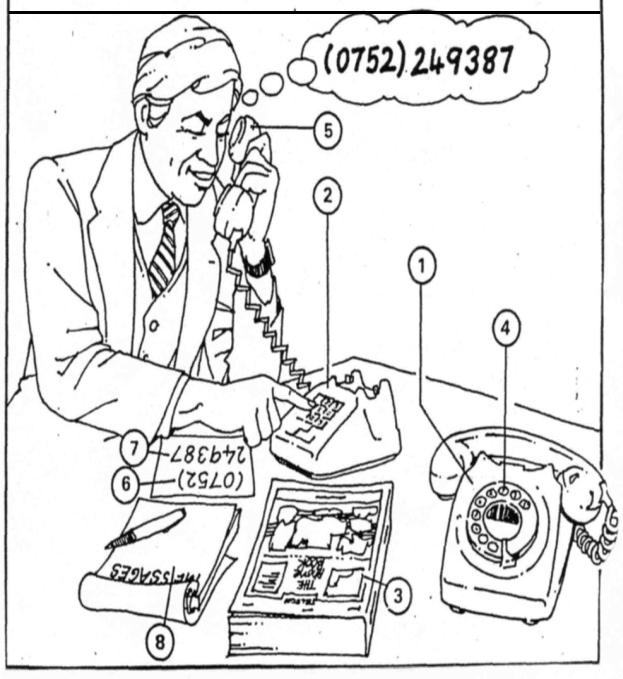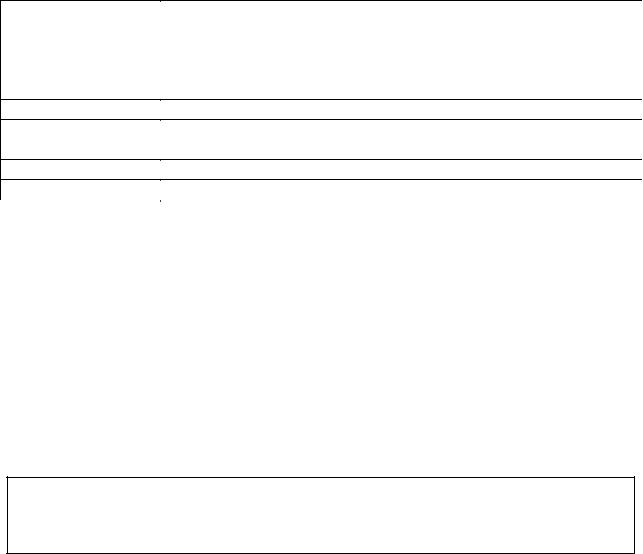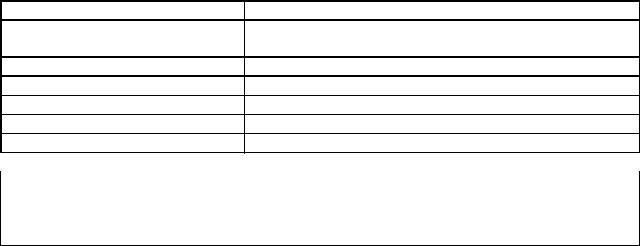
- •FOCUS 1. Read and discuss the following
- •Jenifer Jason
- •George Brown
- •George Brown
- •Donald Vance
- •Donald Vance
- •Мы обращаемся к Вам в связи с…
- •Мы заинтересованы в… и хотели бы узнать…
- •В ответ на Ваше письмо (запрос), мы…
- •Подтверждаем получение Вашего письма от…
- •THEY’VE = THEY HAVE
- •Letter 1
- •L.Crane
- •Jann v Oos
- •Kate
- •Jack Smithson
- •Jack Smithson
- •Tim Daldon
- •Ivanov
- •FOCUS 3. Study the notes, written patterns and vocabulary
- •EXHIBITIONS AND CONFERENCES
- •FOCUS 1. Read and discuss the letters
- •Sophie Bolan
- •Brian Hayden
- •Sophie Bolan
- •Sally Turner
- •Mandy Lim
- •WRITTEN PATTERNS
- •INTERNATIONAL COMPUTING SERVICES PLC
- •Peter Keyser
- •INTERNATIONAL COMPUTING SERVICES PLC
- •Peter Keyser
- •ELmVHiggins
- •Michael Doom
- •NOTES
- •WRITTEN PATTERNS
- •LETTER 1.2
- •LETTER 1.3
- •LETTER 2.1
- •LETTER 2.2
- •GETTING THROUGH
- •Repetition of telephone numbers to avoid misunderstanding
- •ICAO PHONETIC ALPHABET
- •BRITISH TELEPHONE ALPHABET
- •THE INTERNATIONAL SPELLING ANALOGY
- •FOCUS 3. Study the vocabulary
- •Time:
- •Time:
- •Time:
- •Time:
- •Memo
- •Caller’s number is
- •Oh, hello, Bill. How are you keeping?
- •EASTLAND BANK
- •OCTOBER
- •Tape 7 – Changing an appointment
- •What day was the appointment fixed on?
- •Why is Miss Simpson calling Mr. Raven?
- •What about 6.00 on Friday. Is that suitable?
- •WEATHERPROOF LTD.
- •Newtown Liverpool L30 7KE
- •James Brown
- •AO TECHNOSERVICE
- •A.Gomonov
- •AO ELECTRONICA-TRADE
- •119511 Moscow Lesnaya st., 8, Russia
- •A.Mishin
- •J.White & Co. Ltd.
- •ENQUIRIES AND REPLIES TO ENQUIRIES 2
- •1951 Benson Street Bronx, New York 10465
- •H.Rosen
- •R.Levine
- •10 Ichiban-cho Tokyo 102, Japan
- •D.R.Dove
- •Delivery
- •S. King
- •Samuel Long
- •Anita Broderick
- •C.Marlow
- •Mr. N. Woods
- •A.Nikitin
- •LEAD-IN 1
- •LEAD-IN 2
- •LEAD-IN 1
- •AO INTERSPORT
- •AO INTERSPORT
- •Maria Kiseljeva
- •ORDER No. IS 2815
- •AO INTERSPORT
- •129511 Russia, Moscow, Universitetsky Prospect, 21
- •Item description
- •Samuel Long
- •842 Seventh Avenue, New York, NY 10018
- •Samuel Long
- •AO TECHNOSERVICE
- •Russia, 126523, Moscow, Leningradsky Prospect, 98
- •A.Gomonov
- •Graham Blunkett
- •AO ELECTRONICA-TRADE
- •P.Adler
- •P.Adler
- •H.Rosen
- •SANDMANN OFFICE SUPPLIES
- •S.Olssen
- •M.York
- •AO MOSKVA-PRESTIGE
- •Russia 109004, Moscow, Volgogradsky Prospect, 8
- •AO INTERSPORT
- •AO INTERSPORT
- •Maria Kiseljeva
- •ORDER No. IS 2815
- •AO INTERSPORT
- •129511 Russia, Moscow, Universitetsky Prospect, 21
- •Item description
- •Samuel Long
- •842 Seventh Avenue, New York, NY 10018
- •Samuel Long
- •AO TECHNOSERVICE
- •Russia, 126523, Moscow, Leningradsky Prospect, 98
- •A.Gomonov
- •Graham Blunkett
- •AO ELECTRONICA-TRADE
- •P.Adler
- •P.Adler
- •H.Rosen
- •SANDMANN OFFICE SUPPLIES
- •S.Olssen
- •M.York
- •AO MOSKVA-PRESTIGE
- •Russia 109004, Moscow, Volgogradsky Prospect, 8
- •AO INTERSPORT
- •AO INTERSPORT
- •Maria Kiseljeva
- •ORDER No. IS 2815
- •AO INTERSPORT
- •129511 Russia, Moscow, Universitetsky Prospect, 21
- •Item description
- •Samuel Long
- •842 Seventh Avenue, New York, NY 10018
- •Samuel Long
- •AO TECHNOSERVICE
- •Russia, 126523, Moscow, Leningradsky Prospect, 98
- •A.Gomonov
- •Graham Blunkett
- •AO ELECTRONICA-TRADE
- •P.Adler
- •P.Adler
- •H.Rosen
- •SANDMANN OFFICE SUPPLIES
- •S.Olssen
- •M.York
- •AO MOSKVA-PRESTIGE
- •Russia 109004, Moscow, Volgogradsky Prospect, 8
- •REVISION OF PRICES.
- •ACCEPTING & DECLINING
- •OFFERS & ORDERS
- •Russia, 341 124, Kaliningrad, Lenin st., 12
- •Victor Pankov
- •INFOGRAFICA
- •LEE PHOTOGRAPHICS
- •Sheila Chin
- •Serge Arzaev
- •K.Hikkleer
- •LETTER 1
- •LETTER 2
- •LETTER 3
- •AO DACHA
- •G.Goncharovsky
- •Regio Scipelli
- •Transportmaschinen
- •Alfred Kroll
- •Transportmaschinen
- •Order No. 789-RF
- •V.Maximov
- •ElBullfinch
- •Continuation sheet No. 2
- •Jacques Piemont
- •Alan Parker
- •James Aniston
- •Mary Canningham
- •M.Pushkina
- •ПРОТОКОЛ ПЕРЕГОВОРОВ
- •M.Wang
- •Sommersby Kuala Lumpur
- •S.Dudko
- •Continuation sheet No. 2
- •LETTER 1.1
- •We operate on additional 3% … commission if required.
- •Hendon Middlesex L13
- •Marina Black
- •Hendon Middlesex L13
- •Marina Black
- •Hendon Middlesex L13
- •STATEMENT
- •Account Rendered
- •M.Proud
- •PAYMENT METHODS
- •Clayfield, Burney GG10 TQ
- •New Terms of Payment –
- •Lola Brown
- •T.Raspletina
- •T.Raspletina
- •SETTLING ACCOUNTS
- •E-69 Ester str. Vienna Austria
- •Longland House 20-25 Hunt str.
- •London EC3P 2BE UK
- •Queens B-78 Cathays Park Cardiff
- •CF1 9UJ Verbaarten
- •REISDEN ING
- •CF1 9UJ Verbaarten Amsterdam
- •Diputación 235, Asuncion, Paraguay
- •78 Jaakaren Katu, HH 8 BBB, Helsinki
- •78 Jaakaren Katu, HH 8 BBB, Helsinki
- •78 Jaakaren Katu, HH 8 BBB, Helsinki
- •EXPORTING COMMODITIES.
- •CRUDE OIL
- •EXPORTING MACHINERY
- •ROSEXPORTNEFT
- •Russia, Moscow, Mytnaya, 11
- •V.Klinov
- •SuperOil Inc.
- •1740 WestEnd Avenue, Chicago, Illinois 60624, USA
- •Ellen Morgan
- •ROSMASHEXPORT
- •13 Suschevskij val Moscow
- •ZAO ELKOM-UNA
- •GENERAL CONDITIONS OF DELIVERY
- •HANDLE WITH CARE
- •ОСТОРОЖНО
- •IMPORTING HARDWARE AND SOFTWARE
- •OLIVER GREEN & Co. Ltd.
- •J.Stevens
- •A.Burtsev
- •STAR DREAMS
- •T.White
- •RODRIGUES y CÍA
- •Los Madrazo, 8 y 10 Madrid Espňa
- •INTERVEHICLE LTD.
- •INTERVEHICLE LTD.
- •BRITISH FILMS LTD.
- •G.Virbocoli
- •CLAIMS 2
- •BEERGHAM PLC.
- •BEERGHAM PLC
- •Continuation Sheet No. 2
- •M.C.Hammer
- •ZAO Rusexport
- •Serge Serov
- •Botch TLD
- •A.B.Spruggen
- •GLOBAL PERFECTION
- •GLOBAL PERFECTION
- •Continuation Sheet No. 2
- •ELECTROOBORUDOVANIE
- •Continuation Sheet No. 2
- •Semen Sidorov
- •Messrs. W.H.Strong and Co.
- •Steven King
- •J.K.Bhatta
- •ZAO ROSMACHINY
- •MOSCOW Chistye Prudy 17 tel. (095) 117 01 02
- •28-30, Totford Avenue,
- •Warmley, Bristol BS1 52X
- •MARUCHAN DESIGNERS Ltd
- •Continuation Sheet No. 2
- •Hafiz Parcham
- •IRASOFT
- •Russia, Moscow, Zeleny pr., 3/10-24
- •A.Konkin
- •Zukerstrauss
- •Olga Vertkova
- •ZOOM ENERGY CORP.
- •Russia, Moscow, Suschevski val, 64-32
- •Garbuzov Alexey
- •Bedix Oil Ltd.
- •Bedix House Richmond Surrey TW9 1DW
- •WEMBELY SHOPFITTERS LTD.
- •J.Tritten
- •DELTA COMPUTERS
- •AMOS PARAN
- •Item
- •Via Matichelli 67-HYT-65 Palermo
- •J.Dupont
- •Transhipment allowed
- •D.Adair
- •Dear Sirs
- •D.Adair
- •23 July 20__
- •Barnley’s Bank Ltd.
- •PART II
- •DOCUMENTARY COLLECTION.
- •STAGE 1
- •STAGE 2
- •STAGE 3
- •BANCA COMMERCIALE ITALIANA
- •16 Via di Pietra Papa 00146 Roma Italy
- •BANCA COMMERCIALE ITALIANA
- •16 Via di Pietra Papa 00146 Roma Italy
- •UNION BANK OF SWITZERLAND
- •Haldenstrasse 118 3000 Bern 22 Switzerland
- •S..Schiller
- •Putney & Raven Merchants Ltd.
- •T.Shurgold
- •UNION BANK OF SWITZERLAND
- •J.Guttenberg
- •J.Guttenberg
- •Messrs. Nolestru & Nolestru
- •Messrs. Nolestru & Nolestru
- •SOUTH BANK
- •PART I
- •PART II

82
TELEPHONING 1
GETTING THROUGH

83
FOCUS 1. Read and discuss the lead-in and speech patterns
The following text is from a telephone directory. Read and label the drawing below.
Before you start
Be sure of the number you wish to call; check it in your personal list of numbers or in the directory.
For calls where you need to dial a code before the number you want, check the code in your dialling instructions. It helps to write down the complete code and number before you start to dial.
To dial a call
Lift the handset and listen for the dial tone before you make a call. When you dial, using either a dial or a press-button telephone, don’t pause too long between digits. When using a dial make sure that you rotate it firmly round to the stop and let it return by itself. When pressing buttons make sure that each button is depressed in turn to its full extent and be careful to press only one button at a time. Press the buttons at a steady rate.
Answering calls
Answer your telephone promptly, giving your name, the name of your firm or your number. Keep a message pad handy.
When you finish
Replace the handset promptly and firmly on its rest. This stops the charging if you made the call, and if you fail to do this you line may be temporarily disconnected.

84

85
SAYING NUMBERS
1. OH, ZERO, LOVE, NOUGHT, NIL.
The above are all ways of saying 0 in English.
We say oh |
∙ |
after a decimal point |
|
∙ |
in telephone numbers |
|
∙ |
in bus numbers |
|
∙ in hotel room numbers |
|
|
∙ |
in years |
We say nought |
∙ |
before the decimal point |
We say zero |
∙ |
for the number |
|
∙ |
for temperature |
We say nil |
∙ |
in football scores |
We say love |
∙ |
in tennis |
2. DECIMAL POINT
In English, we use a point (.) and not a comma (,) for decimals. We use commas in figures only when writing thousands.
10,001 is ten thousand and one.
10.001 is ten point oh oh one.
In English all the numbers after a decimal point are read separately:
10.66 |
ten point six six |
NOT ten point sixty six |
You will also hear people say: |
|
|
0.05 |
zero point oh five |
OR oh point oh five |
But if the number after the decimal point is a unit of money, it is read like a normal number: $14.60 fourteen dollars sixty
If you do business over the phone, say nought point five three seven (0.537) and NOT nought point five hundred thirty seven. If the listener missed the word point, you might lose a lot of money.
Say the digits separately after the point.
3. PER CENT
The stress is on the cent of per cent five percent

86
4. HUNDREDS, THOUSANDS, AND MILLIONS
In British English you hear |
a hundred and twenty three. |
In American English you usually |
a hundred twenty three. |
hear |
one thousand nine hundred and ninety nine. |
The number 1,999 is said |
|
The year 1999 is said |
nineteen ninety nine. |
The year 2000 is said |
the year two thousand. |
The year 2001 is said |
two thousand and one. |
The year 2015 is said |
two thousand and fifteen OR twenty fifteen. |
|
It is likely that different people will refer to the early years |
|
of the 21st century in different ways. |
|
Remember that the year 1066 is always referred to as |
|
ten sixty six - not one thousand and sixty six. |
1,000,000 |
is a million OR ten to the power six (106). |
1,000,000,000 |
is a billion OR ten to the power nine (109). |
This is now common usage. In British English a billion used to be ten to the power twelve (1012), but now everyone has accepted the current American usage.
5. FRACTIONS |
|
|
Fractions are mostly like ordinal numbers (fifth, sixth etc.) |
|
|
a third |
a fifth |
a sixth |
Notice, however, the following: |
|
|
a half |
a quarter |
three quarters |
three and a half |
two and three quarters |
|
6. FOREIGN CCURRENCY
Notice these ways of speaking about exchange rates: How many roubles are there to the dollar?
How many roubles per dollar did you get? The current rate is 30 roubles to the dollar.
